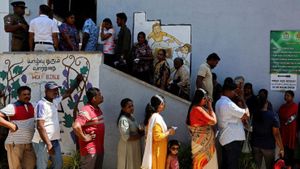Thailand's healthcare system is often highlighted as one of Southeast Asia's success stories, particularly due to its universal health coverage (UHC) scheme implemented early in the 2000s. Despite this, significant public health challenges remain, particularly concerning non-communicable diseases such as hypertension and diabetes.
Recent studies indicate concerning trends about hypertension awareness and control among the Thai population. Data from the National Health Examination Survey (NHES) covering the years from 2004 to 2020 shows steady prevalence rates of hypertension, holding at approximately 25.7% of the adult population by 2019-2020. Alarmingly, only about half of those with hypertension were even aware of their condition. This lack of awareness is glaring especially when more than 50,000 deaths annually can be linked to uncontrolled high blood pressure, underscoring the urgent need for improved public health initiatives.
Hypertension is often called the silent killer since it can go unnoticed until serious complications arise, including cardiovascular disease, which is the leading cause of death nationwide. Despite the existence of free treatment under the UHC system, the lack of diagnosed cases and effective management signifies systemic gaps within Thailand's healthcare delivery model. From 2004 to 2020, awareness of hypertension diagnosis improved from 30.7% to 51.5%, reaching its peak around 2014, but this figure has since declined, raising questions about the effectiveness of public health campaigns aimed at educating the population.
The statistics elicit worries. Among individuals identified as hypertensive, only 47.9% received treatment, and merely 22.7% had their blood pressure under control. These numbers reflect the healthcare system’s shortcomings even with universal coverage, as achieving health goals requires both access to services and patient engagement.
Compounding the issue, diabetes has also become increasingly prevalent. With roughly 6.5 million Thais affected, the Public Health Ministry is urging citizens to adopt healthier lifestyles. Health Minister Somsak Thepsutin specified on World Diabetes Day the pressing need for people, particularly type 2 diabetes patients who often remain undiagnosed, to manage their diets. He attributed the rising diabetes cases to lack of awareness and healthy dietary practices.
Type 2 diabetes, which accounts for over 90% of diabetes cases, is characterized by elevated blood sugar levels, often leading to debilitating health complications without proper management. Symptoms can range from excessive thirst and frequent urination to fatigue, with many sufferers showing no signs at all until serious health issues develop. The rising tide of diabetes calls for public interventions to inform citizens about carbohydrate management, among other dietary adjustments.
Experts highlight the need for proactive engagement from the healthcare sector. Initiatives encouraging locals to reduce sugar intake and increase physical activity are part of the Ministry’s broader strategy to combat these public health crises. Health volunteer networks are being called upon to impart knowledge on dietary habits and the importance of regular physical activity — suggestions include aiming for at least 150 minutes of exercise weekly.
The discussion around hypertension and diabetes naturally extends to the wider issue of health equity. The Thailand Rural Doctors Movement demonstrates the potential for community-based approaches to healthcare. Their recent receiving of the Ramon Magsaysay Award corroborates their success story. Leaders of this initiative focus on ensuring healthcare access to rural populations, traditionally underserved and at heightened risk for chronic diseases due to limited resources.
Dr. Supat Hasuwannakit, the Rural Doctors Society President, emphasized how grassroots initiatives have been pivotal for UHC adoption, particularly by enhancing healthcare services for rural communities. Dr. Kriengsak Wacharanukulkiet noted how such efforts have delivered significant health improvements across varied demographics.
By recognizing and addressing the systemic obstacles contributing to stagnant or declining health outcomes — like lack of healthcare literacy and inadequate chronic disease prevention strategies — Thailand has the opportunity to pivot. Continued investment and reform are needed to transition the country from merely providing healthcare access to ensuring effective care and outcomes.
The overarching goal remains clear: improving public health outcomes through education, effective management of chronic conditions, and equitable access to medical care will be pivotal as Thailand navigates its public health future. Only through concentrated efforts can the country hope to sustain its healthcare achievements and counter the rising tide of chronic diseases.
Therefore, renewed commitment to overcoming the challenges of non-communicable diseases, alongside maximizing the benefits of UHC, will not only prevent untimely deaths but could substantially improve the quality of life for millions of Thais. Thailand stands at a crossroads; dedicated action can steer the nation toward healthier outcomes for all.



